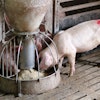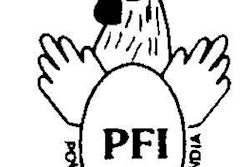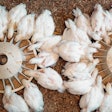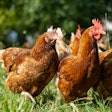I left the Executive Conference on the Future of the American Egg Industry, which was held in conjunction with the International Poultry Expo in Atlanta, with more questions than answers. Jeff Simmons, president, Elanco, presented the case for the necessity of preserving agriculture’s right to employ the latest technologies to increase food production while minimizing inputs in order to feed a growing world population. Tom Silva, vice president, JS West, shared the results of the first flock of hens on a commercial egg farm in the U.S. in enriched colony housing. (These two presentations are highlighted in this issue, Will fringe groups decide the future of agriculture?). If the U.S. egg industry transitions from conventional cages to enriched colony housing, is it preserving the right to employ technology to continue to increase egg production while minimizing inputs?
One could make the argument that by seeking federal legislation to transition hens out of traditional cages, U.S. egg producers are giving in to what Simmons calls the “fringe.” But, there is another way of looking at this situation. Egg producers in Germany, by a combination of legislation and market place intervention by activists, now can’t even use enriched colonies or “colony nests” to produce eggs for most German retailers. (The German cage ban is also detailed in this issue, Cage ban shrinks the German layer industry). It can be argued that a transition to enriched colony housing in the U.S. is a necessary step to prevent a complete move to cage-free production. It might also be argued that enriched colonies will allow for easier implementation of new technologies than might cage-free systems.
For decades the egg industry has used the egg laying performance, feed efficiency and low mortality of hens housed in cages as evidence of good welfare for these birds. These production metrics have been replaced by other measurements by researchers who attempt to measure bird welfare, but it has been the continual improvement in these production metrics that have made eggs the most affordable source of high quality animal protein for human consumption around the globe.
It seems that just about everyone in this country is now on record saying that the welfare of hens housed in enriched colonies is at least as good or better than welfare of hens housed in conventional cages. JS West only has data on one flock of hens in enriched colony housing, but that flock had lower mortality and higher egg production than the breeder’s optimal standard. It makes me wonder, maybe bird performance is a good indicator of welfare after all?



















